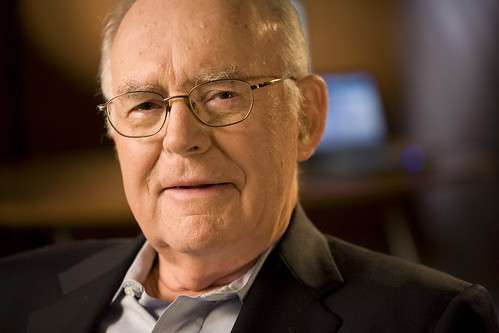Book Depository
Online bookseller Book Depository is closing down with some three weeks notice. It wasn’t a topic at work and barely made a ripple amongst British friends. The Hong Kong part of my social media bubble shared the news and were sad about it. The company had been owned by Amazon since 2011. I used it for a few reasons:
- Free postage anywhere. I have friends around the world and Book Depository was a good way of sending a gift book. It made the process of international gifting so much easier. I bought a set of books there as recently as last week. Many of the upset people on social media were from Australasia, Latin America, Eastern Europe and Asia
- Getting hold of English books when I lived in Hong Kong. At the time I lived in Hong Kong there were a couple of nice chains that did English language books, but if I wanted something for my professional life or esoteric interests, then online made more sense. Dymocks, Eslite and the various independent stores would only get you so far. For everything else Book Depository helped out. This was partly down to book shops being a ‘lifestyle’ in Hong Kong and other parts of Asia. They carefully curate fiction but aren’t necessarily like the university book shops I spent my teens and twenties in
- Arbitrage. Despite being owned by Amazon, there were a number of items that I bought where there was a price difference between Book Depository and their parent company
- You could find a particular edition or format, with Amazon it could be a bit of a lottery
- It isn’t full of tat like Amazon. Amazon Marketplace has been both a blessing and a curse. Amazon hasn’t done a good enough job curating Marketplace. I found Marketplace useful at the beginning, rather like a fixed-price eBay. Now its a dystopian retail experience littered with a substantial minority of counterfeit products and sub-standard garbage
- Their ask the author section provided some interesting reading.
The brand
I always had it in my mind as ‘The Book Depository’ rather than Book Depository. It’s always the way I discussed it with other people. I had to go back and edit stray ‘The’s that slipped into this post.
Diminished ambitions
Book Depository is being closed by Amazon as part of cost cutting across its book and device categories. There is a certain irony in Alexa being in full retreat just at the time when LLMs were about to turn up. Alexa skills are likely to get loss in the subsequent withdrawal and LLM expansion. Book Depository helped plug gaps on the map where Amazon didn’t have native businesses. The decline of Book Depository implies an upper limit to Amazon’s global retail expansion.
Beauty
Chinese perfume brands taking over: Documents, To summer, and Scent Library leading the way
Beauty bots drive R&D at Unilever’s £68 million facility | Vogue Business – The world’s highest concentration of robots doing material chemistry can be found at Unilever’s lab in North West England. Vogue Business gets a behind-the-scenes peek at the facility, which develops innovative products for brands including Hourglass and Living Proof.
Business
British Airways To Test Whether Having More Cabin Crew Can Improve The Inflight Experience On Poor Performing Routes | Paddle Your Own Kanoo and United Airlines Wants Flight Attendants To Create “Wow Factor” Onboard – Live and Let’s Fly – there seems to be an incremental move to differentiate and sell on in-cabin experience which is a new development
China
510K CPUs, HDDs & more seized as smugglers keep trying to sneak tech into China | Ars Technica – it seems to be a bit like the VAT carousel mobile phone scams of old in the UK
Gao Quanxi and Huang Jisu on Left and Right in China – Reading the China Dream
‘Dare to fight’: Xi Jinping unveils China’s new world order | Financial Times and Xi Jinping Says He Is Preparing China for War | Foreign Affairs, which probably explains Syngenta’s US$9.5 billion IPO in China remains in limbo after unexplained last-minute cancellation of listing meeting | South China Morning Post – The agrichemical producer, controlled by China National Chemical Corp, has received no official explanation, nor any word on next steps, a source says. Speculation includes the idea that regulators may worry the giant IPO could siphon money from existing equities and derail an ongoing rebound
Von der Leyen calls for de-risking EU-China relations in speech to MERICS | Merics
AUSI interviewed by Vice Media on how influencers are being used for foreign policy aims by China
Culture
The House of Keith Haring Mixtape – playlist by Faith Fanzine | Spotify
Design
Call To Adventure | Smartdoll – inclusion in design
Asianometry on a whirlwind tour of microchip packaging
Economics
Economic uncertainty means disproportionately high layoffs in the tech sector – New Digital Age – interesting analysis on the Patagonia vest recession
Energy
Is China’s New Rocket Really Coal Powered? Deep Space Updates – April 2nd – YouTube – yes kerosene made from the kind of coal hydrogenation process similar to what SASOL used in apartheid-era South Africa. The National Coal Board had a pilot plant doing something similar during the late 1980s at Point of Ayr under what was called a ‘coal liquefaction plant‘. I used to know a few of the guys that had worked there previously. The plant had a number of experienced oil refinery technicians on the staff when it was running. The site was subsequently taken over and was where BHP Petroleum built their sour gas facility and brought natural gas ashore from the Liverpool Bay oil and gas field in the early 1990s. It also probably tells you everything you need to know about China’s climate related decarbonisation goals.
Finance
Unpaywalled: Two posts about de-dollarization | Noahpinion
FMCG
Exports of Instant Noodles Set Yet Another Record – The Chosun Ilbo (English Edition): Daily News from Korea – interesting how a stable that did well during lockdown is now doing well during inflationary times
Gadgets
Most Americans Are Using Dumb Phones Than Smartphones | GizChina – interesting assertion. Not sure its accurate
Health
EU backs use of Novo Nordisk’s weight loss drug in adolescents | Reuters
How the new generation of weight-loss drugs work | The Economist – the potential benefits of such drugs go beyond their ability to promote weight loss in individuals. By showing that molecular mechanisms hinder people’s attempts to lose weight, they show that gluttony is not to blame when people remain obese. That should slowly help to eliminate the stigma. Both weight-loss surgery and drugs are useful tools in the fight against obesity. But by changing the conversation these new drugs may remind health-system leaders that they need to do much more to encourage healthy lifestyles.
Hong Kong
‘Fair price, fine quality’: Hong Kong fast-food chains become go-to place for mainland Chinese budget tours | South China Morning Post – Established eatery chain Café de Coral was among those capitalising on the trend as it offered advance bookings for the tour groups, which have increased after the city fully resumed cross-border travel with the mainland earlier in the year. A Post reporter at 11.45am on Monday observed two mainland tour groups of about 30 people each being guided from their coaches and taken to Grand Waterfront Plaza, a shopping centre in To Kwa Wan, where they dined at the site’s Café de Coral outlet.
Ideas
Defence Intelligence – communicating probability – GOV.UK – really useful nomenclature that I could see being used in business
Innovation
Three more books about the technology wars – by Noah Smith
Lululemon Tried to Become a Tech Company. It Didn’t Work Out | The Walrus
Ireland
Northern Ireland: the paramilitaries that ‘never go away’ | Financial Times
Japan
How a major toy company kept 4chan online | Ars Technica
Studio Ghibli President Hoshino Koji Resigns – Variety
The disguised blessings of Japan’s demographic decline | Financial Times
Luxury
Audemars Piguet Announces It Will Replace Stolen Watches as Part of Anti-theft Scheme – if you want to know why they’re doing this, find out more here.
What the anti-influencer movement means for luxury | Vogue Business
Marketing
Don’t listen to the industry sages, they’re not your ad’s target – Mark Ritson on the perils of HPPO
Materials
Deep-sea mining is key to making transition to clean energy, says Loke | Financial Times
Online
Limiting social media improves body image for teens and young adults : Shots – Health News : NPR
Lawyer Questions Scope of EU AI Act – EE Times
The Homogenization of Social Media Is Going To Have Some Real Consequences | Big Technology
Online trolls are taking a toll in China – BBC News – In collectivist cultures such as China, those perceived as going against the norm tend to be severely punished, experts say. What makes it worse, they add, is a pervasive culture of shame. “A strong sense of collectivism in China can mean that cyberbullying, when perpetrated as a symbolic act of violence or aggression towards another in a public setting, may lead to drastic measures, such as suicide, to escape that sense of humiliation,” says K Cohen Tan, a vice-provost at University of Nottingham Ningbo China
The Social Costs of Not Sharing Fake News | INSEAD Knowledge
Security
Pro-Islam Hacktivists Likely a Front for Russia’s Killnet | Dark Reading
Automatic Updates Deliver Malicious 3CX ‘Upgrades’ to Enterprises | Dark Reading and Trojanized Windows and Mac apps rain down on 3CX users in massive supply chain attack | Ars Technica. 3CX seems to be a SIP client across iOS, Android, Windows and Mac. There is a PBX and PBX as a service part to the offering as well. I haven’t come across it as Skype for Business, then Teams and Zoom became a thing.
Army Materiel Command boss says logistics are key to future warfare | Defense News
US Army deploys new hypersonic weapon | Defence Blog
Lockheed Martin ramps up HIMARS production | Defence Blog
Leaky Pet Apps Pose Privacy, Cybersecurity Threats | Tech News World
China spy facility speculation swirls over Cambodia, Myanmar – Asia Times
Guam, where America’s next war may begin | The Economist
Pentagon Prepares for Space Warfare as Potential Threats From China, Russia Grow – WSJ
Software
Taiwan
War in Taiwan will dwarf Ukraine unless the US shows China its teeth | Simon Tisdall | The Guardian – this marks somewhat of an editorial shift for the Guardian closer to other broadsheets in the UK media
Technology
Samsung said to directly develop 8-inch process for GaN, SiC devices



